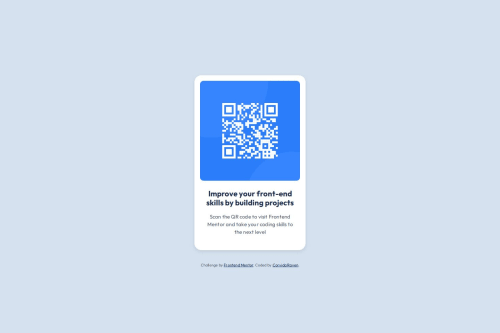Simple, Semantic & Accessible QR Component (Under 100 Lines of CSS)

Solution retrospective
Since this project was quick to code, I challenged myself to reduce the CSS to 100 lines or less. I focused on treating my CSS like a design system, extracting repeated patterns into small, focused classes. This approach is a little more time-consuming, but I can see how it makes a component like this easy to maintain and scale over time.
Please log in to post a comment
Log in with GitHubCommunity feedback
- @fbtwitter
I appreciate your attention to detail, especially the addition of titles to images and the use of the <small> element for accessibility. However, based on best practices in web development, wrapping these elements in a <figure> tag would provide a clearer structure, as it semantically groups the image with its associated content. This approach enhances both accessibility and the logical organization of the page.
Join our Discord community
Join thousands of Frontend Mentor community members taking the challenges, sharing resources, helping each other, and chatting about all things front-end!
Join our Discord